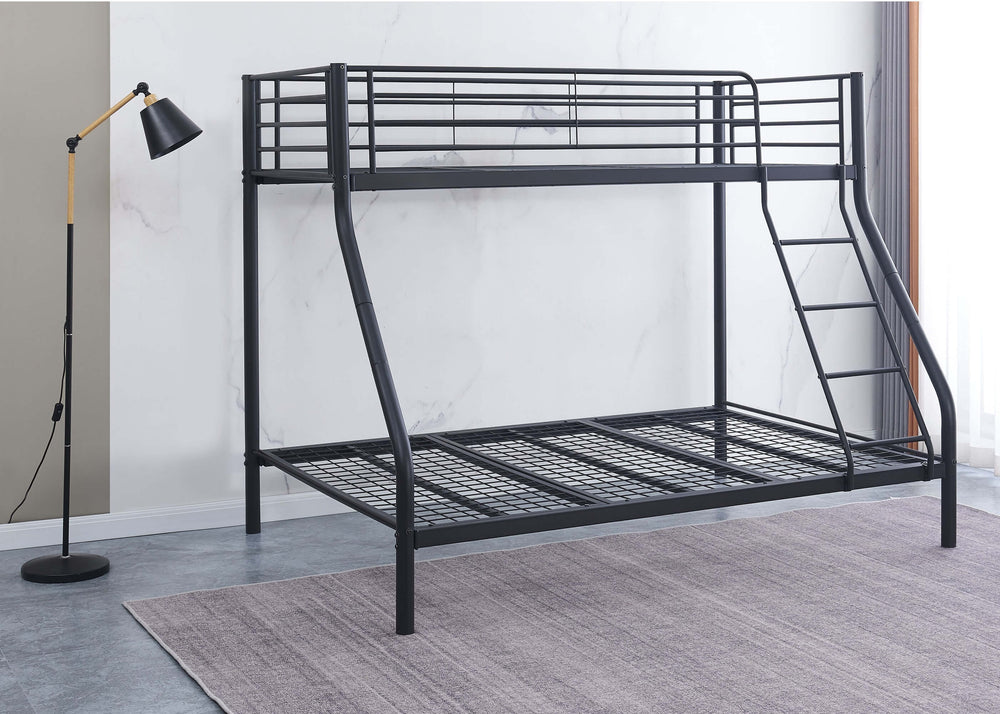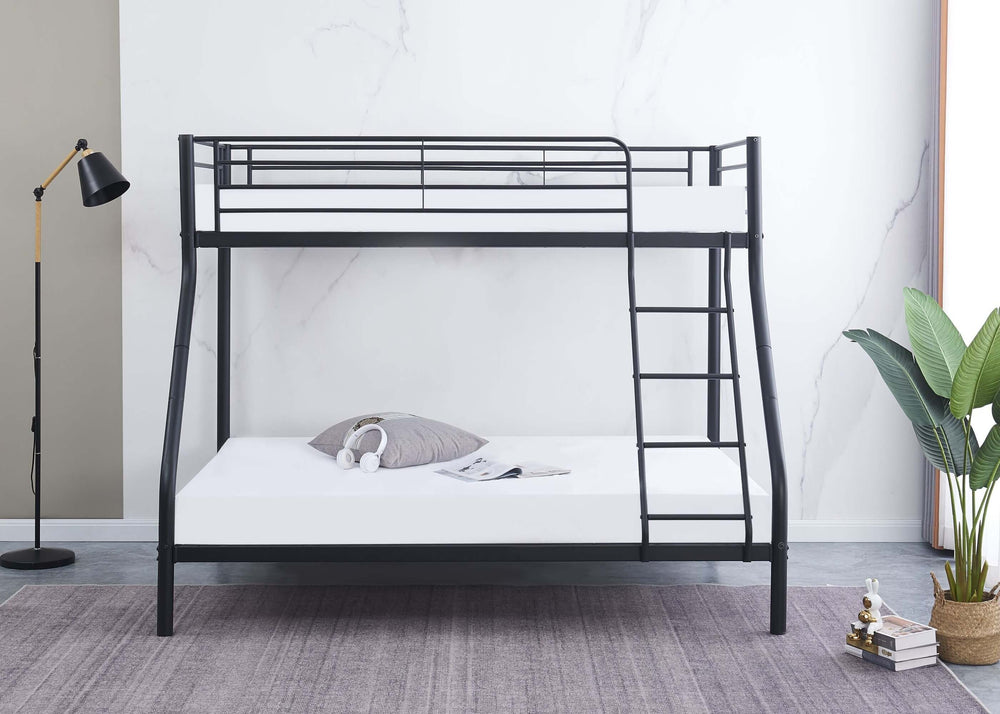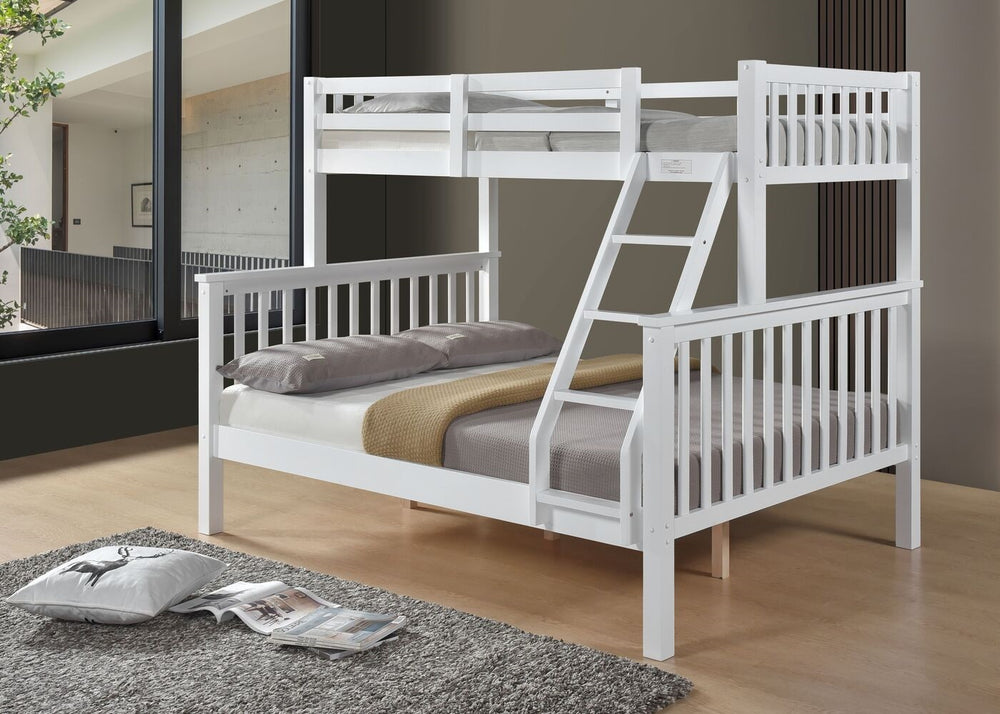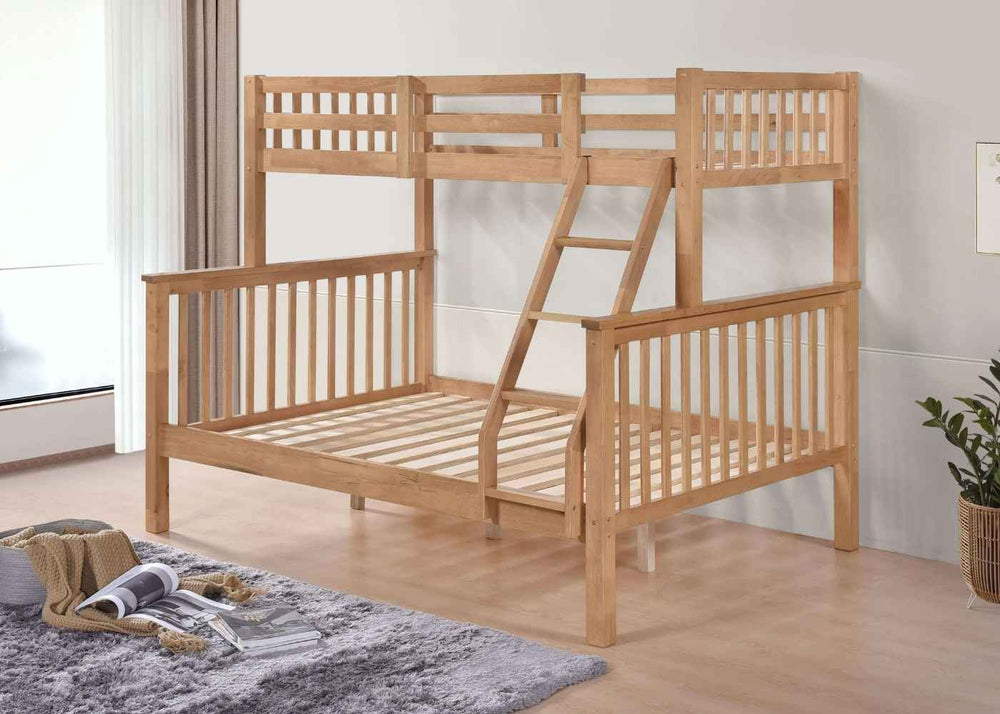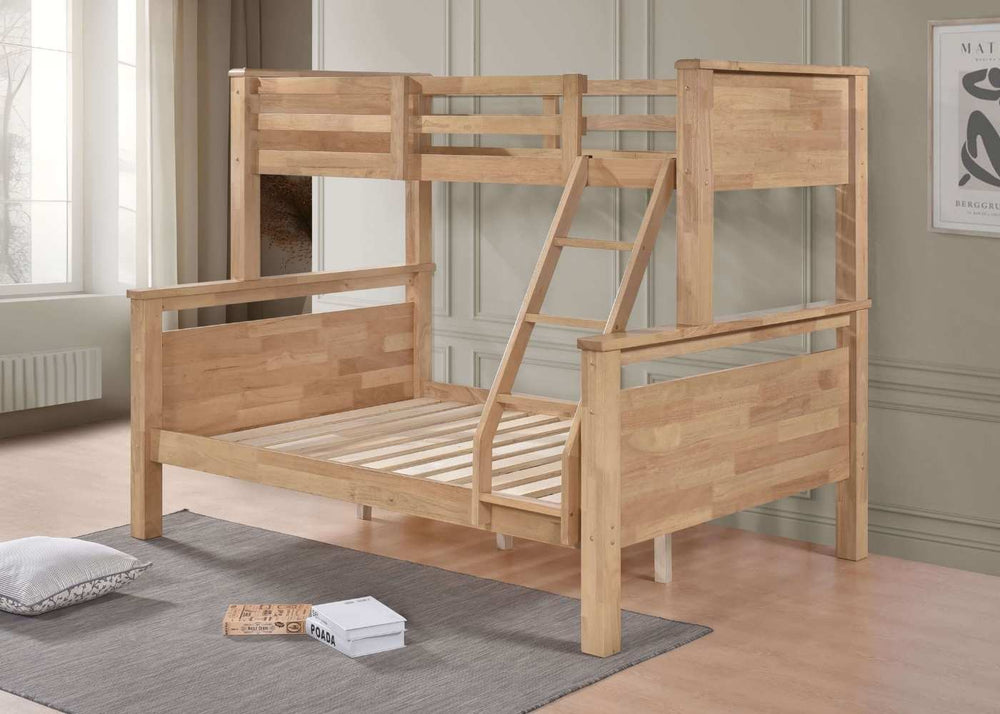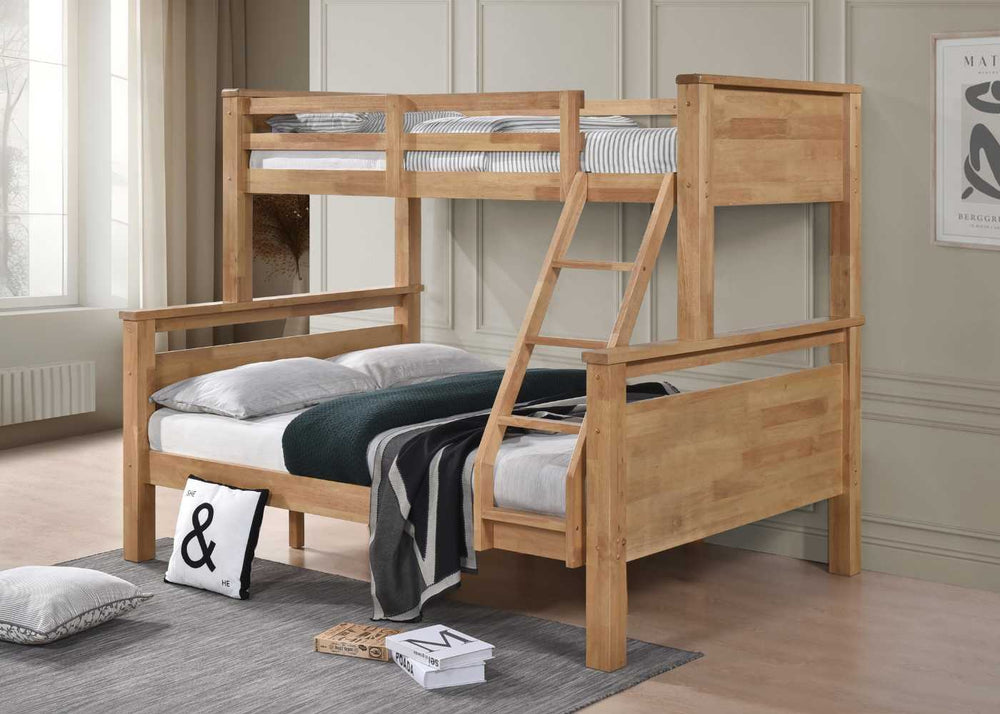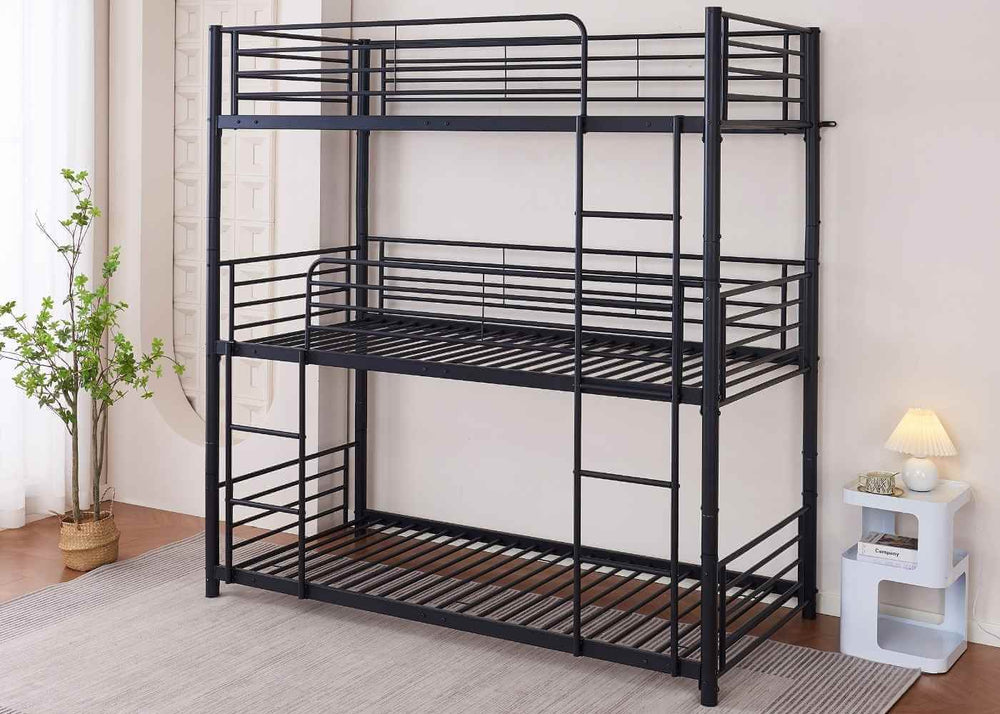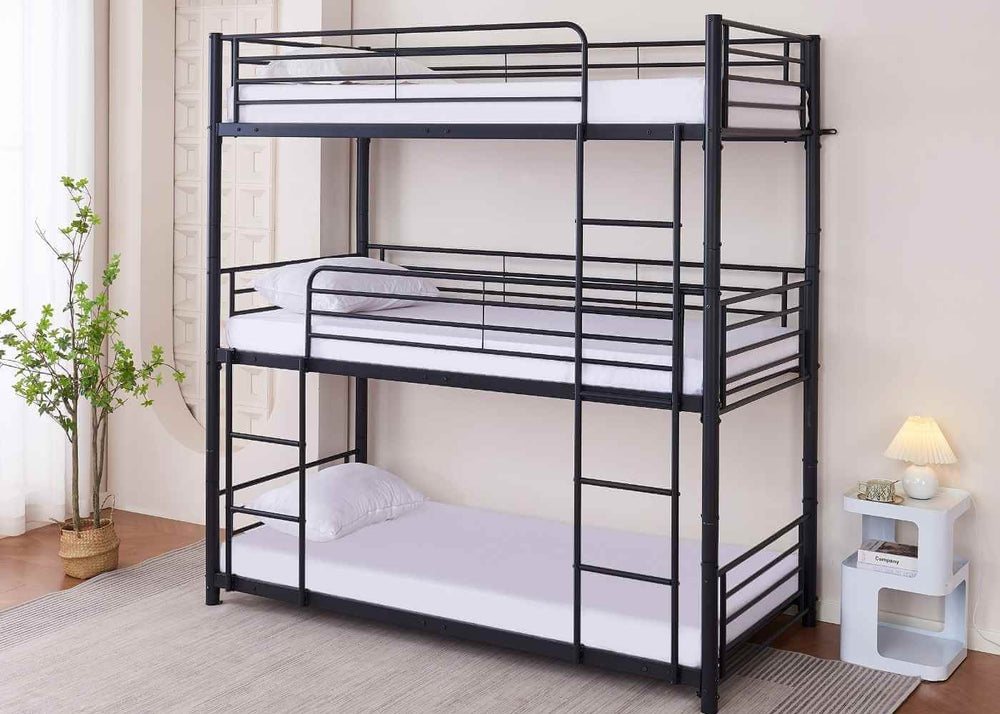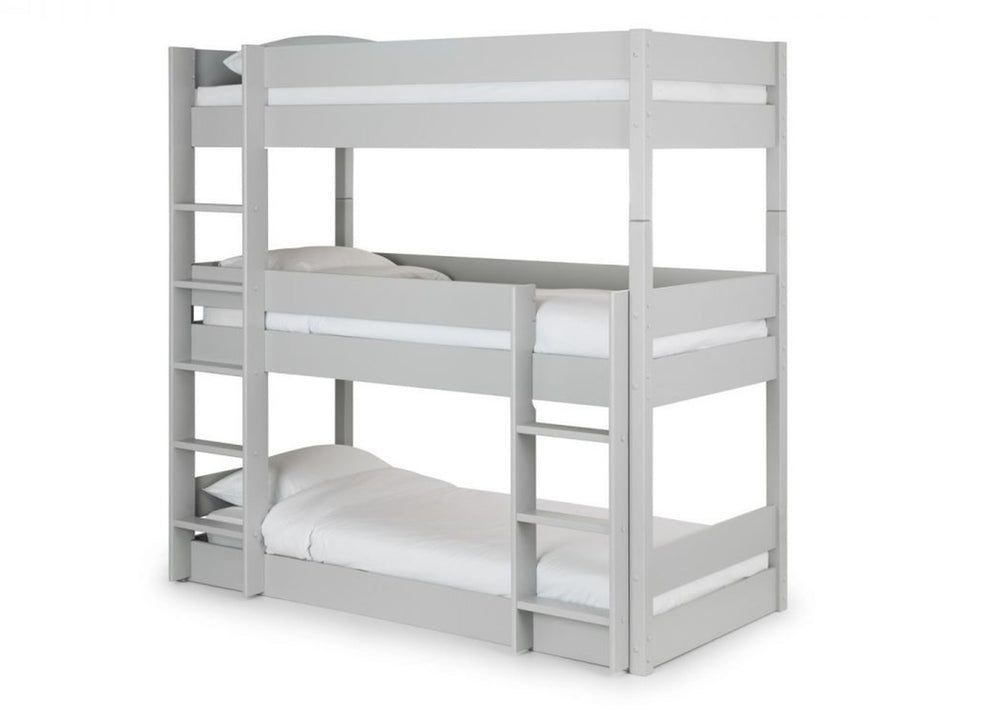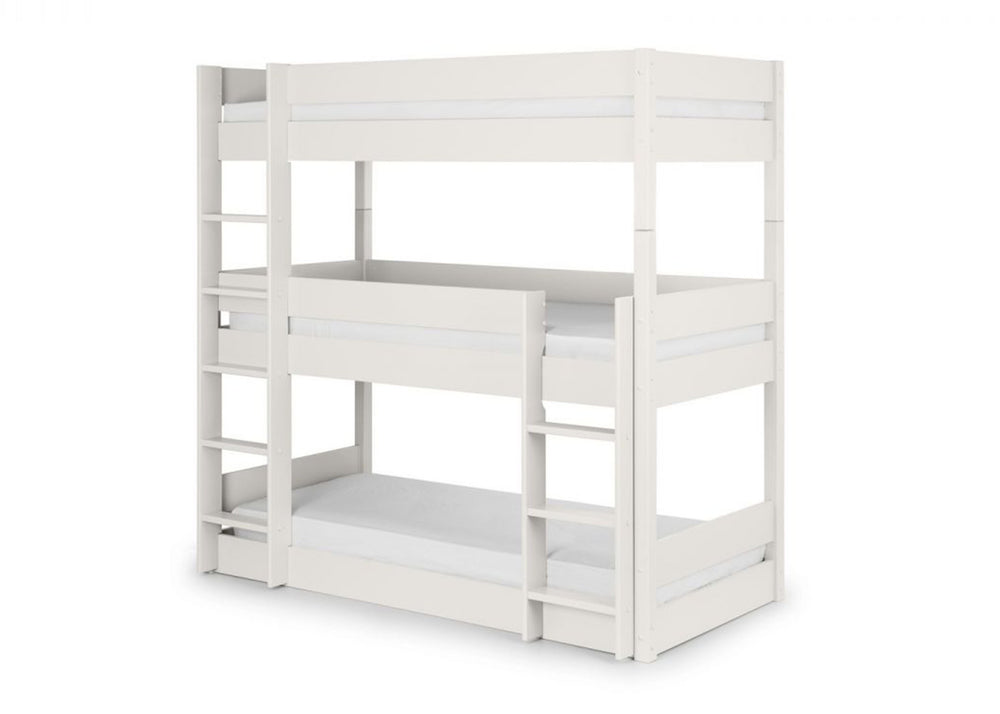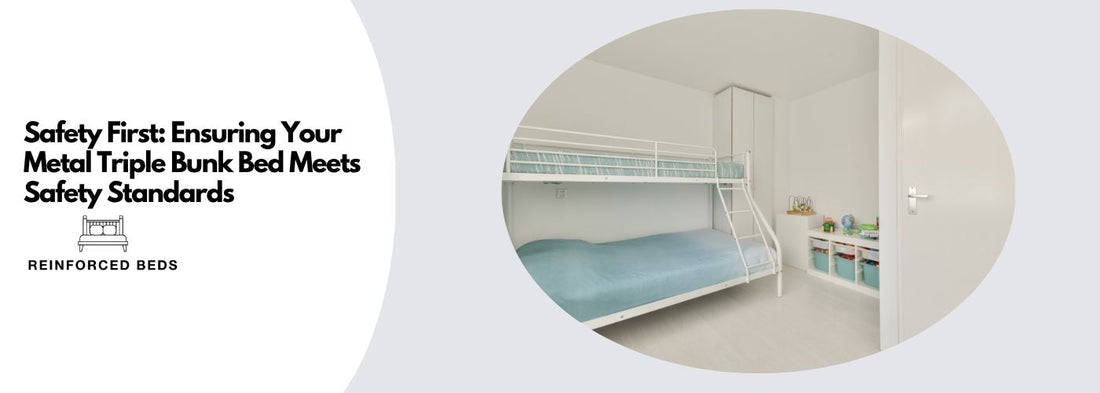
Metal triple bunk beds are a practical and space-saving solution for families or households with shared rooms. Ensuring that your bunk bed is safe is paramount. In the UK and EU, strict bunk bed regulations exist to protect users, particularly children, from potential hazards. This guide outlines the key safety features to look for in a metal triple bunk and how to ensure it complies with essential standards.
The Importance of Safety in Triple Bunks
Triple bunks are designed to maximize sleeping arrangements in limited spaces, but they must be built to the highest safety standards. Poorly designed bunk beds can lead to accidents, such as falls, entrapments, or structural failures. By prioritizing safety, you can enjoy the benefits of a bunk bed without compromising on peace of mind.
Bunk beds are particularly popular for families with children. However, children are more prone to accidents, making safety an even greater priority. Ensuring your bunk bed meets the highest standards is essential not only for compliance with regulations but also for the long-term well-being of your loved ones.
Key Safety Features to Look For
Guardrails
Guardrails are a critical feature of any safe metal bunk bed. According to UK and EU regulations:
- The upper bunk must have guardrails on all sides to prevent falls.
- The guardrails should have a minimum height of 16cm above the mattress surface.
- Openings in the guardrails must be small enough to prevent children from slipping through.
Check that the guardrails on your metal bunk are sturdy, securely attached, and meet these specifications. Guardrails should also be smooth and free from sharp edges to prevent injuries during use. Some advanced models even come with removable or adjustable guardrails, allowing customization as your child grows.
Ladder Safety
The ladder is another essential component of a safe bunk.
Look for:
- Non-slip steps to prevent slipping.
- A ladder angle that is easy for children to climb safely.
- Secure attachments to the bed frame to avoid wobbling or detachment.
Additionally, consider bunk beds with ladders that can be positioned on either side to accommodate your room layout without obstructing safe access. For younger children, ladders with handrails provide additional security when climbing to the upper bunks.
Weight Capacity
Each bunk in a triple bed must support the intended weight of its occupants. The manufacturer should specify the weight capacity for each level. Ensure:
- The weight limits are sufficient for your needs.
- The metal frame is reinforced to handle heavy loads, especially on the lower bunks.
High-quality models like those from Reinforced Beds are designed with durability and safety in mind, making them ideal for families. Reinforced metal frames are less likely to bend or weaken over time, ensuring long-term safety for both children and adults.
Spacing Between Bunks
Adequate spacing between each level of the bunk bed ensures comfort and prevents head injuries. UK/EU regulations recommend:
- A minimum of 75cm clearance between the top of the mattress on one bunk and the bottom of the bunk above it.
This spacing is particularly crucial for older children or adults who may use the lower bunks. Proper spacing also ensures better airflow, making the sleeping environment more comfortable.
Adherence to Safety Standards and Certifications
In the UK and EU, bunk beds must comply with:
- BS EN 747-1:2012+A1:2015: This standard specifies the structural safety and stability requirements for bunk beds.
- General Product Safety Directive (GPSD): Ensures that products meet general safety requirements.
Always check for certification marks or labels on the product to confirm compliance. Reputable retailers like Reinforced Beds prioritize adherence to these standards. Products with certifications offer assurance that they have been rigorously tested for safety.
Structural Integrity
Look for triple bunks made from high-quality materials such as reinforced steel. Welded joints and thick metal frames provide added durability. Avoid models with thin or poorly constructed components that may weaken over time.
For families with changing needs, it's worth considering how triple bunk beds can adapt over time. Our blog on the versatility of triple bunk beds for growing families explores how different layouts and features can evolve with your household — from toddlers to teens. Models like the Kelling Triple Bunk Bed combine a timeless wooden design with practical layout options that suit both younger and older children alike.
Additional Safety Tips for Metal Triple Bunk Beds
Mattress Fit
Ensure that the mattresses fit snugly into the frame with no gaps larger than 2.5cm to prevent entrapment. Properly fitted mattresses also prevent movement during sleep, reducing the risk of accidents.
Supervision
Educate children on safe bunk bed use and supervise younger ones. Teach them to avoid horseplay and jumping on the bed to minimize the risk of injury.
Floor Stability
Place the bed on a flat, stable surface and secure it to the wall if possible. Wall-mounting kits are often available for added stability.
Avoid Overcrowding
Limit the top bunk to one occupant at a time and adhere to the weight limits specified by the manufacturer.
Regular Inspections
Periodically check the bunk bed for loose screws, worn components, or signs of structural wear. Tighten bolts and replace damaged parts as needed.
Choosing Child-Safe Metal Triple Bunk Beds
When selecting a metal bunk bed, prioritize models specifically designed for children. Brands like Reinforced Beds offer options with reinforced mesh bases, robust steel frames, and guardrails that meet strict safety standards. These features provide peace of mind for parents while ensuring the comfort and safety of children.
Common Questions About Triple Bunk Safety
1. Are metal triple bunks suitable for young children?
Yes, provided they meet safety regulations and include features like guardrails and non-slip ladders. However, it’s recommended to restrict the top bunk to children over six years old.
2. How can I ensure the bed remains safe over time?
Regularly inspect the bed for wear and tear, tighten screws, and replace damaged parts promptly.
3. What is the age recommendation for each bunk?
It is recommended that children over six years old use bunk beds. There is no upper limit for use.
Conclusion
Investing in a metal triple bunk bed can be a smart and stylish solution for maximizing space, but safety should never be compromised. By focusing on key features such as guardrails, ladder design, weight capacity, and compliance with UK/EU regulations, you can ensure your bed is both safe and functional. Remember, a safe metal bunk bed is an investment in your family’s well-being, providing a secure and comfortable sleeping arrangement for years to come.
While safety is key, it's also important to consider how a triple bunk bed enhances your living space overall. Our guide to the advantages of triple bunk beds in small rooms dives into how these space-saving designs offer both practicality and style — perfect for busy households looking to make the most of every inch.
Explore our collection of thoughtfully designed, safety-conscious metal triple bunk beds today.

Shane Cousins

Marketing Executive
Shane has been part of the Reinforced Beds team for over four years, bringing his BSc Honours degree together with a passion for helping customers find the right products. He enjoys creating buying guides and collection insights that simplify the decision-making process, while also keeping an eye on the latest bedroom and furniture trends. Beyond writing, he produces videos and media content that bring our products to life, giving customers a closer look at what makes them special.

